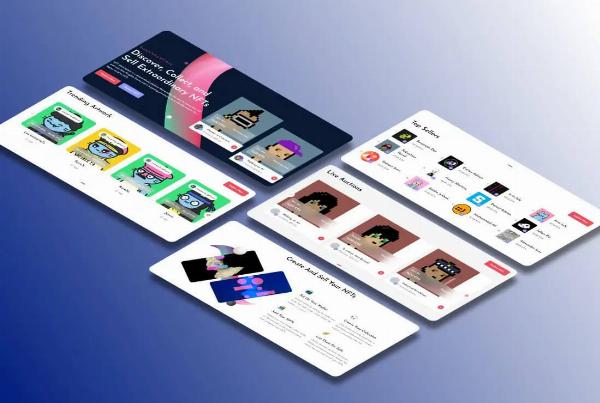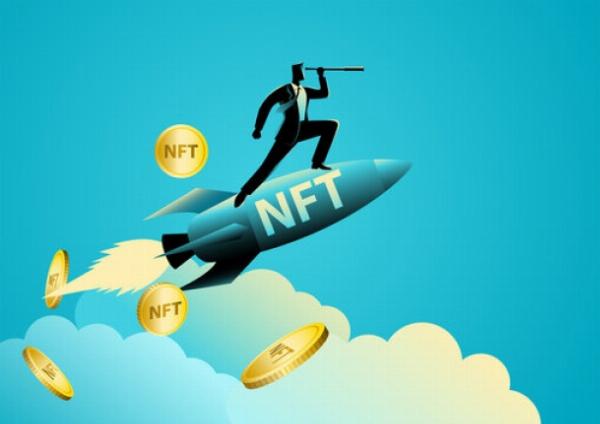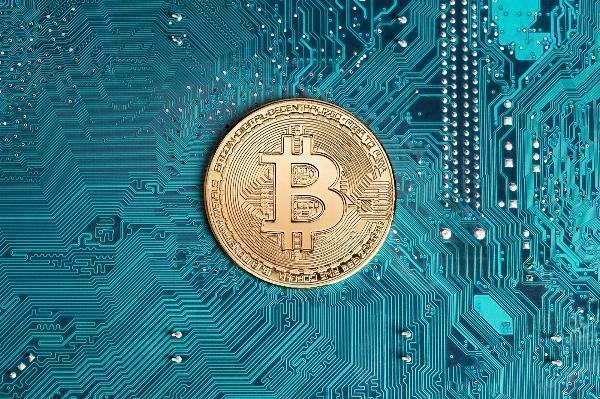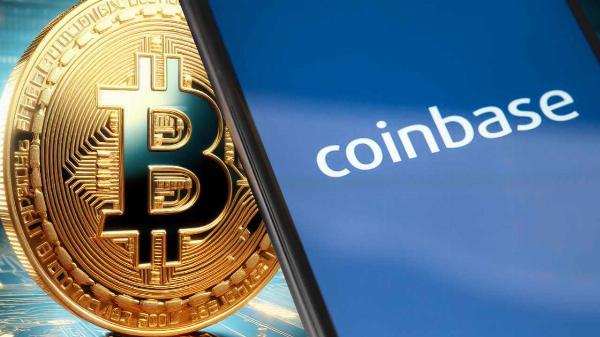 Conversion-Focused Landing Pages – More Leads, Less Bounce!
Conversion-Focused Landing Pages – More Leads, Less Bounce!
NFT Marketplace Development: A Comprehensive Guide
Written by auroragrace » Updated on: June 17th, 2025 259 views

The digital landscape is continually evolving, with blockchain technology at the forefront of this transformation. Among its many innovations, Non-Fungible Tokens have emerged as a groundbreaking phenomenon, revolutionizing how we perceive ownership, creativity, and commerce in the digital world. NFT marketplace development is not just a technical endeavor; it is a venture into the future of digital assets, one that promises to redefine various industries including art, gaming, music, and beyond.
The Rise of NFTs: A Brief Overview
To understand the significance of NFT marketplace development, one must first grasp the essence of NFTs. Unlike cryptocurrencies such as Bitcoin or Ethereum, which are fungible and can be exchanged on a one-to-one basis, NFTs are unique digital assets verified using blockchain technology. Each NFT represents ownership of a specific item or piece of content, which can range from digital art and music to virtual real estate and collectibles.
The concept of NFTs gained mainstream attention in early 2021, when digital artist Beeple sold his NFT artwork for a staggering $69 million at Christie’s auction house. This event marked a turning point, demonstrating the potential for digital assets to hold significant value. Since then, numerous artists, musicians, gamers, and even brands have embraced NFTs, leading to an exponential growth in the market. This surge has inevitably created a demand for NFT marketplaces where these digital assets can be bought, sold, and traded securely.
The Core Components of an NFT Marketplace
Developing an NFT marketplace involves integrating several key components to ensure a seamless and secure user experience. At its core, an NFT marketplace is a digital platform where users can mint, buy, sell, and trade NFTs. However, creating such a platform requires a deep understanding of blockchain technology, smart contracts, and user experience design.
- Blockchain and Smart Contracts: The backbone of any NFT marketplace is its underlying blockchain technology. Ethereum has been the most popular choice due to its robust support for smart contracts and the ERC-721 and ERC-1155 standards, which are widely used for creating NFTs. Smart contracts are self-executing contracts with the terms of the agreement directly written into code. They facilitate transactions without the need for intermediaries, ensuring transparency and security. Each NFT transaction is recorded on the blockchain, providing an immutable record of ownership.
- User Interface and Experience: A successful NFT marketplace must offer an intuitive and engaging user interface. Users should be able to easily navigate the platform, browse through various NFTs, and execute transactions with minimal friction. Features such as advanced search filters, personalized recommendations, and detailed NFT descriptions enhance the user experience. Additionally, integrating wallet functionality, such as MetaMask or Trust Wallet, allows users to securely store and manage their NFTs and cryptocurrencies.
- Minting and Listing NFTs: One of the primary functions of an NFT marketplace is to enable users to create (or mint) their own NFTs. This process involves uploading the digital file, adding metadata (such as title, description, and attributes), and setting terms such as royalties for secondary sales. Once minted, NFTs can be listed for sale on the marketplace. Providing creators with tools to easily mint and manage their NFTs is crucial for attracting talent to the platform.
- Buying and Selling Mechanisms: An NFT marketplace must support various transaction methods to cater to different types of users. Fixed-price sales, auctions, and bidding are common mechanisms. Fixed-price sales allow users to purchase NFTs at a set price, while auctions and bidding introduce an element of competition, often driving up the value of rare and sought-after NFTs. Implementing these features requires careful consideration of smart contract logic to ensure fairness and transparency.
- Security and Compliance: Security is paramount in NFT marketplace development. Given the high value of some digital assets, marketplaces are prime targets for cyberattacks. Implementing robust security measures, such as two-factor authentication, encryption, and regular security audits, is essential. Additionally, ensuring compliance with legal and regulatory requirements is critical to avoid potential legal issues. This includes adhering to anti-money laundering (AML) and know-your-customer (KYC) regulations.
The Role of NFTs in Various Industries
The versatility of NFTs has led to their adoption across multiple industries, each finding unique applications for this technology. Understanding these applications provides insights into the diverse use cases that an NFT marketplace can support
- Art and Collectibles: The art world has been one of the earliest and most enthusiastic adopters of NFTs. Digital artists can mint their work as NFTs, allowing them to sell their art directly to collectors without the need for galleries or intermediaries. This democratization of the art market has empowered artists, giving them greater control over their work and earnings. Collectors, on the other hand, gain a verifiable and immutable record of ownership, enhancing the value and authenticity of their collections.
- Gaming: The gaming industry has embraced NFTs to create unique in-game assets that players can own, trade, and sell. These assets can range from rare skins and weapons to virtual real estate and characters. NFT marketplaces dedicated to gaming assets enable players to monetize their gaming achievements and investments. Furthermore, NFTs can facilitate interoperability between games, allowing players to use their assets across different gaming platforms.
- Music and Entertainment: Musicians and entertainers are exploring NFTs as a way to engage with their fans and create new revenue streams. Artists can mint exclusive tracks, albums, concert tickets, and merchandise as NFTs. These digital collectibles offer fans a unique way to support their favorite artists and gain access to exclusive content. Additionally, NFTs can provide artists with ongoing royalties from secondary sales, ensuring they continue to benefit from the appreciation of their work.
- Virtual Real Estate: The concept of virtual real estate has gained traction with the rise of metaverse platforms like Decentraland and The Sandbox. In these virtual worlds, users can buy, sell, and develop digital land parcels using NFTs. NFT marketplaces for virtual real estate facilitate these transactions, allowing users to create and monetize virtual experiences, from art galleries and museums to virtual shops and entertainment venues.
- Fashion and Luxury Goods: The fashion industry is leveraging NFTs to create digital fashion items and accessories. These digital assets can be worn by avatars in virtual worlds or collected as unique digital fashion pieces. Luxury brands are also exploring NFTs to authenticate physical products, ensuring their provenance and combating counterfeiting. NFT marketplaces dedicated to fashion and luxury goods offer a new dimension to the shopping experience, blending the digital and physical worlds.
Challenges and Considerations in NFT Marketplace Development
While the potential of NFTs is immense, developing a successful NFT marketplace comes with its own set of challenges and considerations. Addressing these challenges is crucial to creating a platform that is not only functional but also sustainable and user-friendly.
- Scalability and Transaction Costs: One of the primary challenges in NFT marketplace development is scalability. As the popularity of NFTs grows, so does the demand on blockchain networks, leading to congestion and high transaction fees. Ethereum, for instance, has faced criticism for its high gas fees during periods of network congestion. Solutions such as layer-2 scaling solutions, sidechains, and alternative blockchains (like Binance Smart Chain, Flow, or Polygon) are being explored to address these issues and provide a more scalable and cost-effective infrastructure.
- Environmental Concerns: The environmental impact of blockchain technology, particularly proof-of-work (PoW) blockchains like Ethereum, has been a topic of concern. The energy consumption associated with mining and transaction validation has led to criticism from environmental advocates. NFT marketplaces must consider this issue and explore more sustainable alternatives. The transition of Ethereum to a proof-of-stake (PoS) consensus mechanism with Ethereum 2.0 aims to reduce its environmental footprint. Additionally, marketplaces can explore other eco-friendly blockchains that prioritize sustainability.
- User Education and Adoption: NFTs and blockchain technology can be complex and intimidating for newcomers. Ensuring widespread adoption requires educating users about the benefits, risks, and intricacies of NFTs. User-friendly interfaces, comprehensive guides, and customer support are essential components of an NFT marketplace. Simplifying the onboarding process, including wallet setup and transaction execution, can help attract a broader audience.
- Legal and Regulatory Landscape: The legal and regulatory landscape for NFTs is still evolving. Issues related to intellectual property rights, royalties, taxes, and compliance with financial regulations must be carefully navigated. NFT marketplaces need to stay abreast of legal developments and implement necessary measures to ensure compliance. Collaborating with legal experts and regulatory bodies can help mitigate risks and build trust with users.
Future Trends in NFT Marketplace Development
As the NFT ecosystem continues to evolve, several trends are emerging that will shape the future of NFT marketplace development. These trends highlight the ongoing innovation and potential for NFTs to disrupt various sectors.
- Interoperability and Cross-Chain Solutions: Interoperability between different blockchain networks is a key trend that will enhance the functionality and accessibility of NFTs. Cross-chain solutions enable NFTs to be transferred and utilized across multiple blockchain platforms, increasing their liquidity and utility. This trend will facilitate greater collaboration and integration between various blockchain ecosystems, driving the growth of the NFT market.
- Fractional Ownership and DeFi Integration: Fractional ownership of NFTs is gaining traction, allowing users to own a fraction of a high-value NFT. This democratizes access to expensive digital assets and enhances their liquidity. Integrating decentralized finance (DeFi) protocols with NFT marketplaces can further unlock the potential of NFTs. Features such as NFT-backed loans, staking, and yield farming can create new financial opportunities and incentives for users.
- Metaverse and Virtual Experiences: The concept of the metaverse—a virtual, interconnected universe—presents exciting possibilities for NFTs. NFT marketplaces will play a crucial role in the metaverse by enabling the creation, ownership, and exchange of digital assets within these virtual environments. From virtual real estate and fashion to immersive experiences and social interactions, NFTs will be integral to shaping the metaverse economy.
- AI and Personalization: Artificial intelligence (AI) can enhance the user experience in NFT marketplaces by providing personalized recommendations, optimizing search results, and facilitating content discovery. AI-driven analytics can also offer insights into market trends, user behavior, and asset valuation, helping users make informed decisions. Personalization features can create a more engaging and tailored experience for users, increasing their satisfaction and loyalty.
Conclusion
NFT marketplace development is at the forefront of the digital revolution, offering unprecedented opportunities for creators, collectors, and investors. By leveraging blockchain technology and smart contracts, NFT marketplaces provide a secure and transparent platform for the exchange of unique digital assets. The diverse applications of NFTs across industries such as art, gaming, music, and fashion highlight their transformative potential.
However, the journey of developing an NFT marketplace is not without challenges. Scalability, environmental concerns, user education, and regulatory compliance are critical factors that need to be addressed. As the NFT ecosystem continues to evolve, trends such as interoperability, fractional ownership, and metaverse integration will shape the future of NFT marketplaces.
In this dynamic landscape, innovation and adaptability are key. By staying ahead of technological advancements and understanding the needs of users, developers can create NFT marketplaces that not only thrive but also drive the next wave of digital transformation. The future of NFTs is bright, and with it, the promise of a more decentralized, inclusive, and creative digital economy.
Note: IndiBlogHub features both user-submitted and editorial content. We do not verify third-party contributions. Read our Disclaimer and Privacy Policyfor details.
Copyright © 2019-2025 IndiBlogHub.com. All rights reserved. Hosted on DigitalOcean for fast, reliable performance.
















